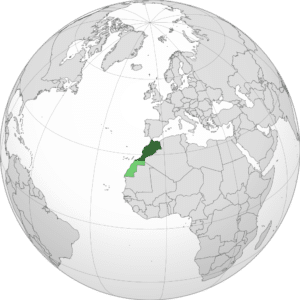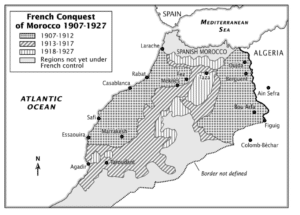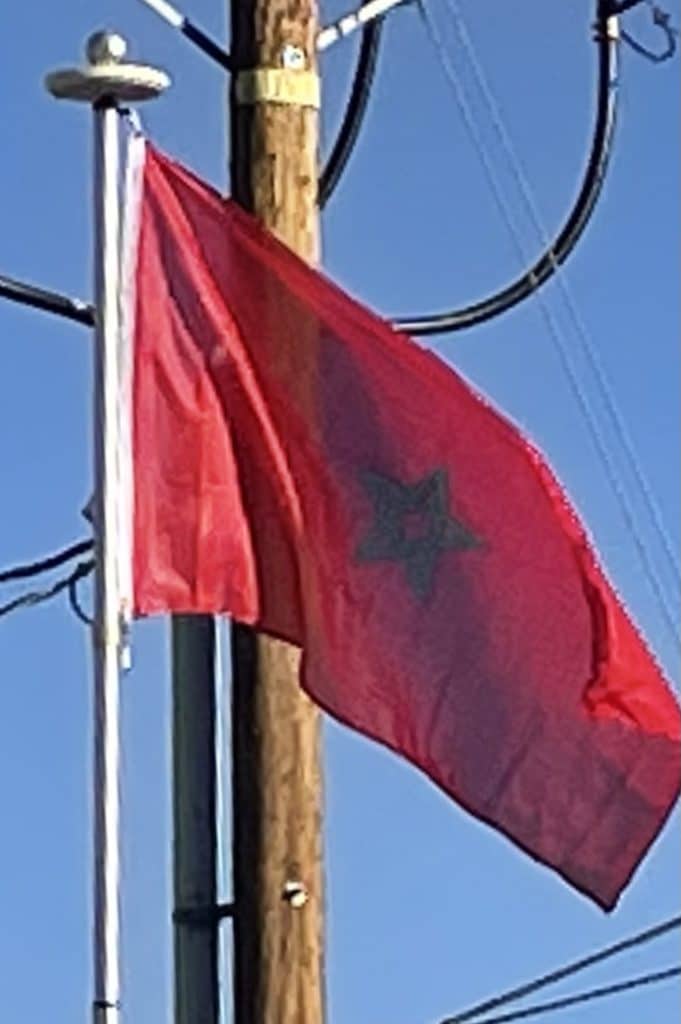Introduction:
Morocco, is a country located in the Maghreb region of North Africa. It overlooks the Mediterranean Sea to the north and the Atlantic Ocean to the west, and has land borders with Algeria to the east and the status-disputed territory of Western Sahara to the south. The Kingdom of Morocco also claims as part of Morocco the exclaves of Ceuta, Melilla and Peñón de Vélez de la Gomera (all of which are under Spanish jurisdiction) and several small Spanish-controlled islands off the Moroccan coast. The capital is Rabat and the largest city is Casablanca. Morocco spans an area of 710,850 km2 (274,460 sq mi) and has a population of over 37 million.

Since the foundation of the first Moroccan state by Idris I in 788 AD, the country has been ruled by a series of independent dynasties. Morocco reached the height of its power in the 11th and 12th centuries, during the Almoravid and Almohad dynasties, when it encompassed parts of Iberia as well as part of northwestern Africa. Beginning in the 15th century, the Portuguese Empire extended to include parts of Morocco: Portugal conquered territory along the Moroccan coast and founded settlements some of which endured into the 18th century. Nevertheless, the Moroccan dynasties of Marinid (which ruled from the 13th into the 15th century) and Saadi (which ruled from the 15th into the 17th century) otherwise resisted foreign domination: Morocco was the only country in northwest African to escape occupation by the Ottoman Empire. The Alaouite dynasty, which rules Morocco to this day, seized power in 1631. The country’s strategic location near the mouth of the Mediterranean eventually attracted the interest of European powers: In 1912, Morocco was divided into French and Spanish protectorates, with an international zone in Tangier. It regained its independence and reunified in 1956, and has been relatively stable and prosperous (by regional standards) since then: Today, it has the fifth largest economy in all of Africa.

Morocco claims ownership of the non-self-governing territory of Western Sahara (formerly known as Spanish Sahara), which it has designated its Southern Provinces. In 1975, after Spain agreed to decolonize the territory and cede its control to Morocco and Mauritania, a guerrilla war broke out between those powers and some of the local inhabitants. In 1979, Mauritania relinquished its claim to the area, but the war continued to rage. In 1991, a ceasefire agreement was reached, but the issue of sovereignty remained unresolved. Today, Morocco occupies two thirds of the territory, and efforts to resolve the dispute have thus far failed to break the political deadlock.
The sovereign state of Morocco is a unitary semi-constitutional monarchy with an elected parliament. The country wields significant influence in both Africa and the Arab world, and is considered a regional power and a middle power. The King of Morocco holds vast executive and legislative powers, especially over the military, foreign policy and religious affairs. Executive power is exercised by the government, while legislative power is vested in both the government and the two chambers of parliament, the Assembly of Representatives and the Assembly of Councillors. The king can issue decrees called dahirs, which have the force of law. He can also dissolve the parliament after consulting the Prime Minister and the president of the constitutional court.
